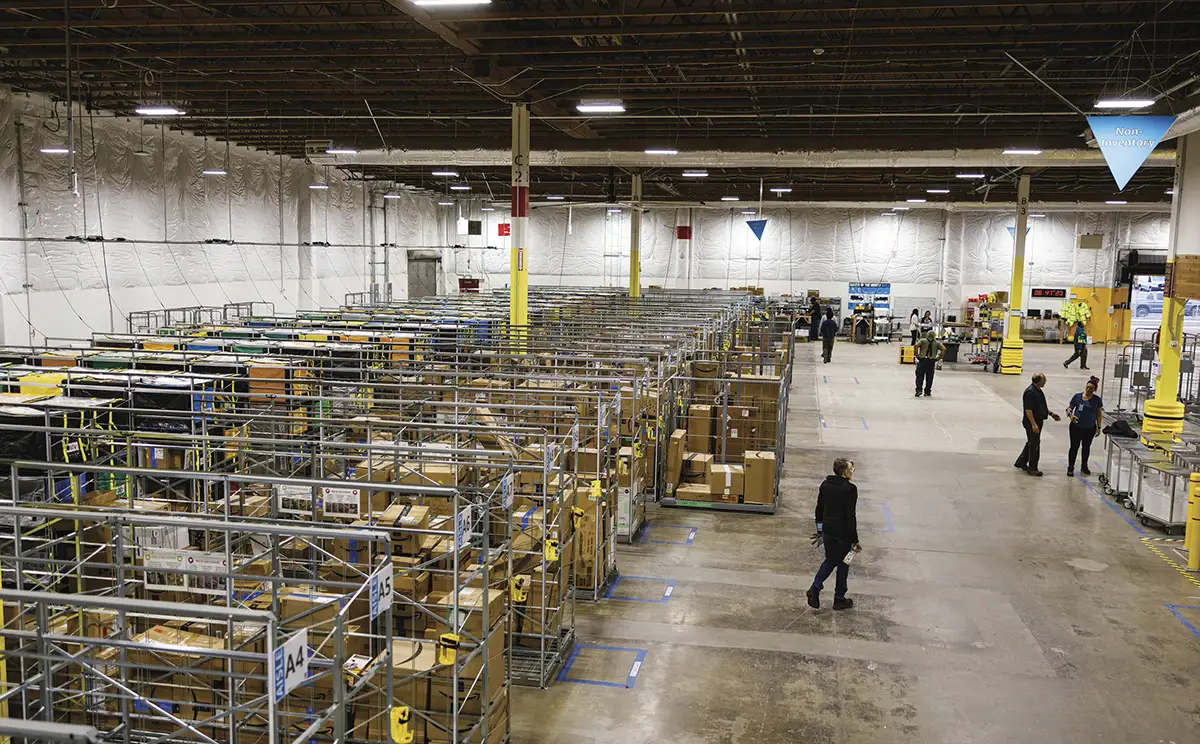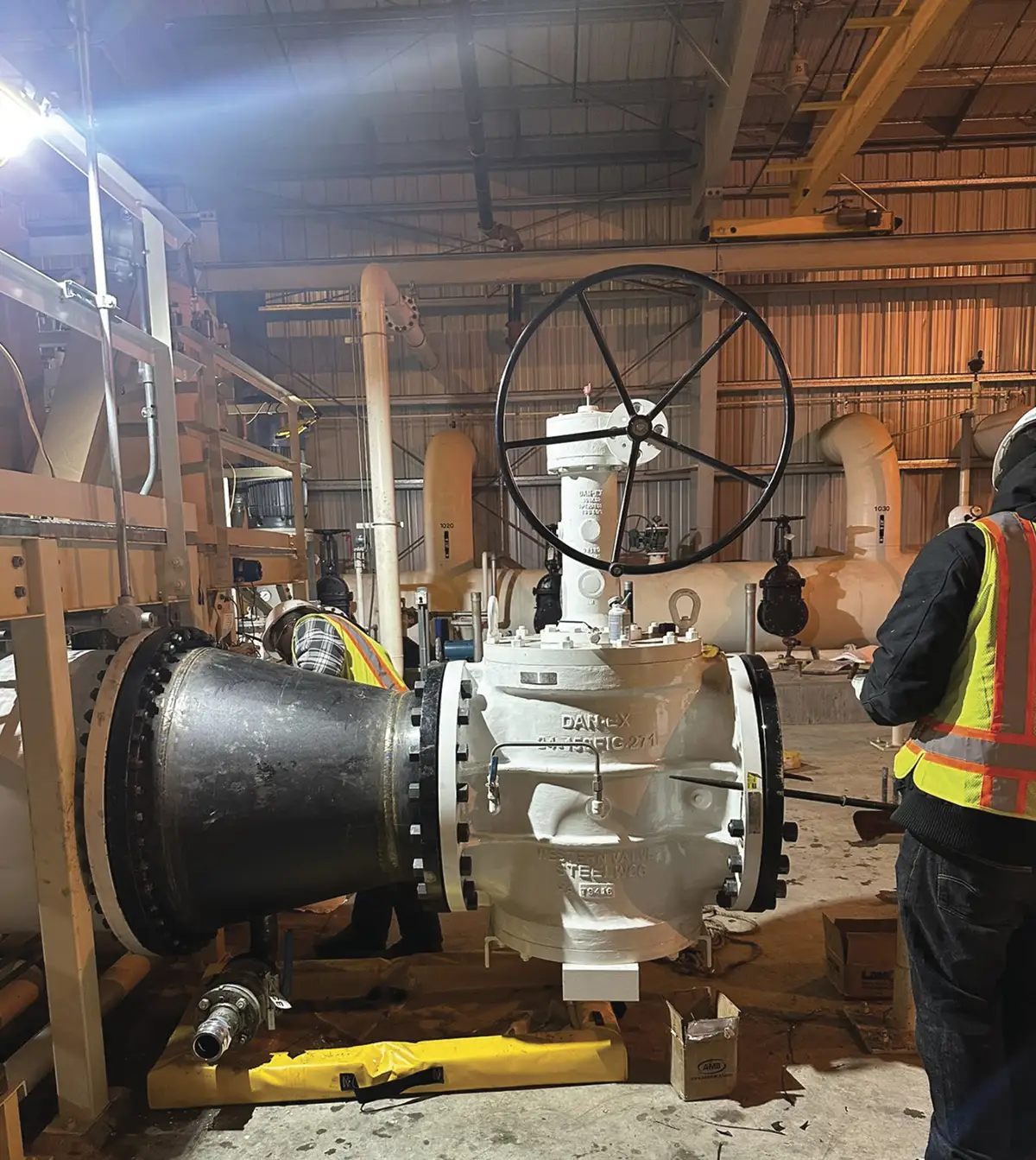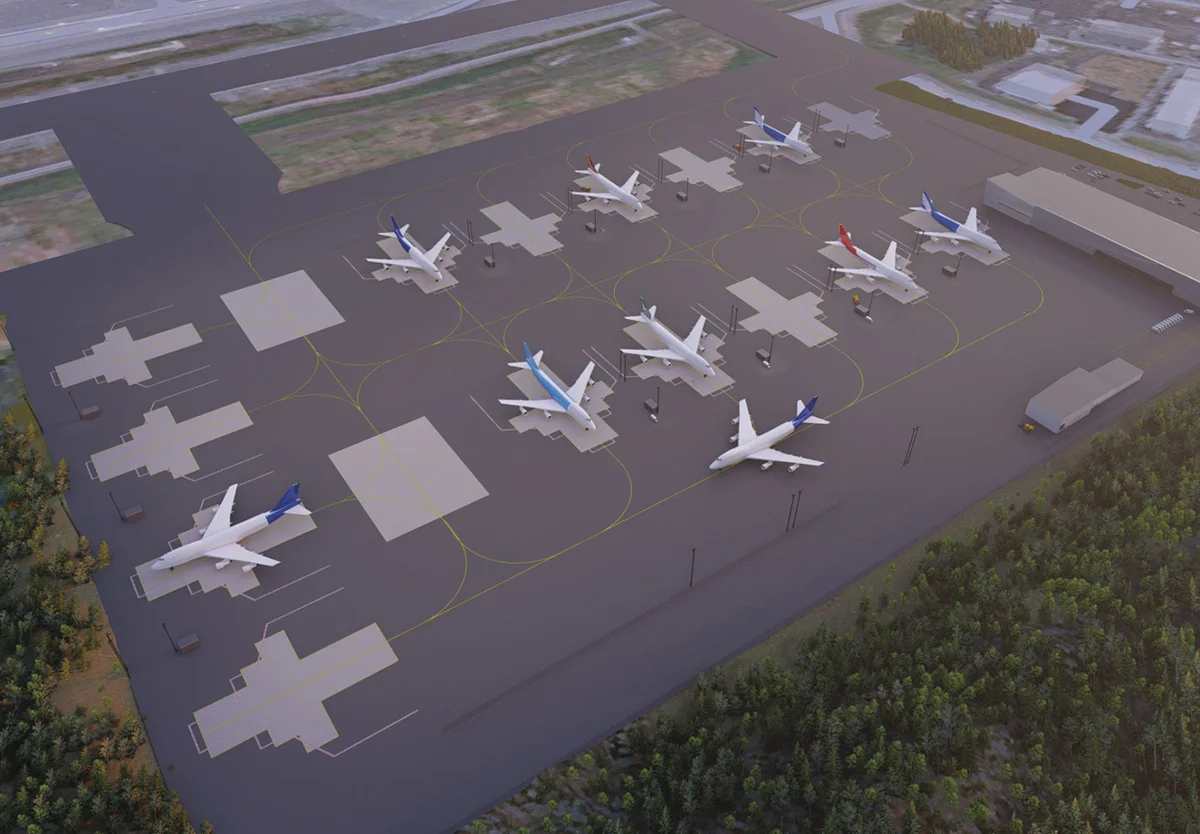very Alaskan has a shipping story: the package that never came, the item that cost more to ship than to purchase, the full online cart that was abandoned when the buyer learned the seller won’t even ship to Alaska. Domestic shippers seem to treat the 49th state like a foreign country, which is especially galling given Anchorage’s centrality to global air cargo.
Local and national carriers and retailers are working to change this. With Amazon’s first ground-based delivery station in Alaska now open, Anchorage and surrounding areas are already seeing faster delivery of packages. Investments and new infrastructure from FedEx Express and NorthLink Aviation also promise to streamline the flow of goods in and out of Alaska.
Prior to two years ago, Amazon relied on a nationwide fulfillment network. This meant that if a customer in Seattle ordered a skillet from Amazon, and the fastest way to get the skillet to that customer was to ship it from Delaware, that item would make a cross-country trek to arrive at the customer’s doorstep.
For Alaskans, this meant packages might come from anywhere—sometimes taking up to two weeks or more to arrive from far-flung origins. An order filled through Amazon’s nationwide model was diverted into the greater shipping and receiving network, passing through one or more third-party carriers, including UPS, FedEx, or the US Postal Service.
That model shifted recently to a more regionalized approach, establishing delivery stations like the one in Anchorage. Amazon stocks these centers with a broad but localized selection of goods. As goods move from the regional fulfillment center to local delivery stations, the company keeps a package within its own shipping system, following an item all the way to the last mile.
This change in Amazon’s logistics strategy not only improves the company’s transportation costs and reduces environmental impacts—it translates to lower costs and faster deliveries for customers.
Anchorage’s Amazon Prime customers, in particular, benefit from their membership.
“One of the key aspects of Amazon Prime is that, on certain goods, you get free shipping,” says Easton Craft, economic development manager for Amazon’s Northwest Region. “And one of the challenges with Alaska is that shipping has been onerous over the years—you’d order something and pay basically equal value for shipping. With the delivery station, Amazon can provide a broader range of selection and faster delivery through the Prime membership.”
“The things that are readily available in the Pacific Northwest in winter aren’t going to be the same items that you’re going to see in Florida,” explains Leigh Anne Gullett, Amazon’s Pacific Northwest Region public relations manager. “Part of delivering packages on a consistent and predictable basis is constantly looking at and adjusting inventory in the regions to make sure that they have the right items as close to the customers as possible.”
Kerry Tasker

“When we talk about things like delivering faster for our customers, that speed is built into all our systems,” Gullett says. “I would say we’ve cut those delivery speeds in half on average, but over time, as the new facility gets fully ramped up, customers will see packages on their doorsteps even faster.”
That speed does not necessarily involve frenzied workers scurrying across vast spaces to fetch an endless list of items. Rather, inside Anchorage’s 66,000-foot delivery station, the process is mostly automated.
A conveyance system brings items to fulfillment associates, who use hand scanners to sort packages into zippered bags. The bags are sorted into carts organized by delivery route; when delivery trucks arrive, the carts are staged and loaded into the vehicles. Once trucks are loaded, they depart for their delivery routes simultaneously. The whole process happens in waves throughout the morning.
Craft says, “It’s a very well-orchestrated ballet.”
Repetitive logistics behind the scenes at the delivery station aren’t just about efficiency and speed. Craft adds, “Especially in a location like Alaska, where it’s very dark for a good portion of the year, the repetition in the process for moving a package from point A to point B helps guarantee that there is as little variability as possible to ensure those good habits of safe operations.”
Through Amazon’s Delivery Service Partner program, individuals work with Amazon business coaches to create and operate their own delivery business. Once an entrepreneur is approved as a Delivery Service Partner, they begin serving Amazon delivery routes while receiving additional mentoring, vehicle maintenance, and other support.
“It’s a great opportunity, and anyone can apply. We also do outreach within specific groups like women, military veterans, indigenous people, and minority-owned businesses with the hope that they’ll take advantage of this program,” Craft says.
As the Anchorage delivery station reaches full operation, job opportunities and faster delivery will open up beyond Anchorage proper. Amazon plans to widen the service area to Wasilla; an additional delivery site is being developed for Fairbanks, as well.
The world’s largest cargo airline rebranded as FedEx Express in 2000. To augment operations at its international hub in Anchorage, FedEx Express is building a Domestic Operations Center at Ted Stevens Anchorage International Airport. That facility will allow the company to split its domestic sorting away from its international cargo.
“The new facility enables us to help ensure the optimal path for each package and increase efficiencies while providing the same reliable service and commitments to our customers,” says Dale Shaw, managing director for FedEx Express Alaska Operations.
With its existing international hub and eleven FedEx Express stations, plus the new sorting facility, FedEx is just one of several companies investing in logistics infrastructure at the airport. UPS is expanding its facility, too, while Alaska Cargo and Cold Storage has plans for a new warehouse.
NorthLink Aviation

“If you’re not FedEx or UPS, you can’t use Anchorage to its full potential as a logistics hub because there’s no infrastructure, there’s no customs clearance,” Dolan explains. “What we’re really trying to do is allow the other carriers to do what UPS and FedEx are doing—without having to make that big capital investment themselves.”
When talking about Anchorage’s possibilities as a major logistics hub, Dolan uses a “crawl, walk, run” metaphor: By making small improvements to existing practices, NorthLink hopes to show carriers how they can save money and create environmental gains—enabling the company to eventually effect greater change.
Dolan provides the example of freighter aircraft that run auxiliary power units while on the ground. “That creates an immense amount of CO2, NOx emissions, and creates a lot of noise,” he says. “It’s really economically inefficient because burning jet fuel to create electricity versus just plugging into the grid—that’s not a great trade.”
As NorthLink translates existing practices into more efficient operations, it will open the doors to additional improvements, like facilitating customs clearance so that foreign planes passing through Anchorage can transport cargo anywhere in the United States. Alternatively, portions of a non-US plane’s cargo could be cleared and passed on to the postal service.
“Instead of paying for an international parcel that’s got all this regulatory stuff associated with it, you’re now just taking a customs-cleared package and handing it to the post office,” Dolan describes. “As we transition from ‘walking’ to ‘running,’ that’s when we start to really unlock the full value of Anchorage.”
“That is criminal, in my view, because it should come to Anchorage and fly out of Anchorage,” he says.

MCG Explore Design
“These freighters are coming in and out of Anchorage on an hourly basis,” Dolan says, noting that making use of these flights is part of the “run” phase of building the airport’s capacity. “There’s a lot of work that we’re doing to get all those pieces together. [But] I think that if we can take a percentage of the international cargo volume coming through the airport and optimize how it gets to end users, we will have created a lot of value for the Alaska economy. And I think that it will open people’s eyes to the strategic importance of Alaska and Anchorage in particular.”
In addition to new infrastructure, NorthLink’s facility will provide dual-hydrant fueling systems and ground service equipment facilities, establishing an operations base where carriers can load and unload cargo and de-ice planes.
NorthLink is also developing a solution for the recovery and recycling of de-icing glycol for the entire airport. Currently, Dolan says, de-icing fluid flows through the storm water system and into waters near the airport.
“De-icing fluid is quite valuable,” Dolan points out. “With this solution, we’ll be able to recycle it and restore it back to AMS 1424 Type I de-icing fluid that can actually go right back onto the planes—and can be recycled an infinite number of times.”
Recycling de-icing fluid, building new infrastructure, establishing local sorting facilities, supporting the growth of small delivery businesses: The logistics of moving cargo through the state must balance all these elements. Thanks to investments by companies like Amazon, NorthLink, FedEx Express, and others, Anchorage is steadily growing its potential as a major international cargo hub.